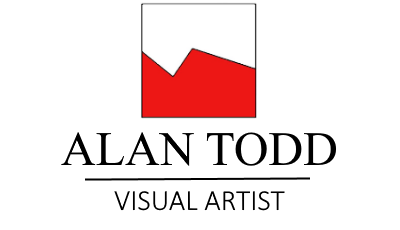THE DEMOCRATIC RIGHT TO SUFFER AS AN ARTIST
One of the questions frequently asked by amateur artists on FB is ‘is it finished?’ They then seek advice on what to do. The best-intentioned advice though is essentially worthless. No work of art worth looking at has ever been created by majority consensus and it is here that one of my favourite aphorisms comes into play. A camel is a horse designed by a committee. While there are obviously successful collaborations, Art is about an individual vision imposed upon the world, a thought expressed by Kenneth Clark in Art and Democracy in 1945. Rather than a source of inspiration, democracy is, for artists, the worst possible situation in which to find themselves as anyone who has submitted art to a committee has discovered. Public art, for instance, is all compromise and about the lowest common denominator. Even at art school level, advice comes via the filter of mentor experience and dewy-eyed clones abound.
Art, and democracy under ideal circumstances, is about freedom of expression and in cultural terms art could be the best expression of democracy, but that is far from the reality. Alexis de Tocqueville wrote Democracy in America in 1835 and recognised even then the drive in democratic societies towards cheapness and utility. Any great art in history was the result of wealthy individuals either wielding their power over society or sponsoring artists as vassals. Great art was an exception created only in dictatorial aristocracies. In democratic countries what you get is a huge number of insignificant art pieces and that is exacerbated in 2024 by the proliferation of social media and the belief that not only is everyone an artist but according to friends and supporters, a genius.
The idea that art and democracy go naturally hand in hand derives from ancient Greece where an ideal society was envisaged. Even then Democracy was a fanciful idea promulgated by an educated elite with power. Whatever faith in cultural education still exists today, the apathy associated with democratic practices in Western countries extends to art. The simple fact is that the majority of people don’t value art at all and exercise their voting rights spasmodically unless compelled to do so.
The links between art and democracy, or more likely art and politics, have been exploited by all societies. Art as propaganda is, and has been rife, from Fascist architecture to WW1 posters, to Trump Tower, to the deserts of the middle east where oil barons erect ever- taller monuments to themselves. When the Futurists wrote their manifesto, they envisioned a society with Futurist art as its modernistic centrepiece and drove a train all over rural Italy trying to persuade a peasant population that cultural change was beneficial. Unfortunately, Italy was still steeped in the propagandising influence of two millennia of marble and stone history and would shortly have to face WW1 when ecstatic Futurist praise for the machinery of war turned on its proponents. Elsewhere, in eastern bloc countries artists were free to create as long as it benefitted the state and artists did as they were instructed. Democratic? Well everybody suffered equally.
There are some examples of artist/artisans having some freedom of choice. The church may have been paying for Rouen Cathedral but rotating teams of seasonal builders never agreed on measurement consistency, so each layer of work is different to the ones above and below. Democracy by default. And then there is Gaudi’s masterpiece. While the ideas were his, the state has all but been bankrupted paying for Sagrada Familla and teams of architects have toiled away for more than a century trying to complete it at ever-increasing expense. Of course, it is now a cultural icon in the cap of Barcelona and accounts for much of the tourist Euro so you could say that not only has it been paid for by the democratic distribution of tax euros, but the collective population of Spaniards and Catalans have come to identify with and rely upon it equally. Democracy at work.
Individual artists though are a different matter altogether. While some choose to align themselves with money from public coffers, the majority see any suggestion of control by authorities as an invasion of the privacy to which all artists are entitled. Ai Wei Wei, noted Chinese political artist, sees his role as poking the official bear and artists in general as benign despots. That may well be true but successful artists are also reliant upon either a state system to provide money and opportunities, benevolent benefactors looking to reduce their tax burden by supporting the arts, or the gallery system which looks to make money out of artists. Self-sufficiency is rare and those artists who do make a living are democratically invited to participate in the taxation system which supports a democratic society. Unless you are a Cy Twombly, supported by his aristocratic wife to indulge himself, free will, privacy and democratic equality are simply pipe dreams.
The principals of democracy are expressed and practiced all over the world with an elite assuming the reins of society everywhere you look but inevitably artists play little part either in political agendas or in their own existence. If there is a direct link between art and democracy it is that under any democratic society artists have the collective right to be poor, put upon, misunderstood, barely tolerated and to complain vociferously.
